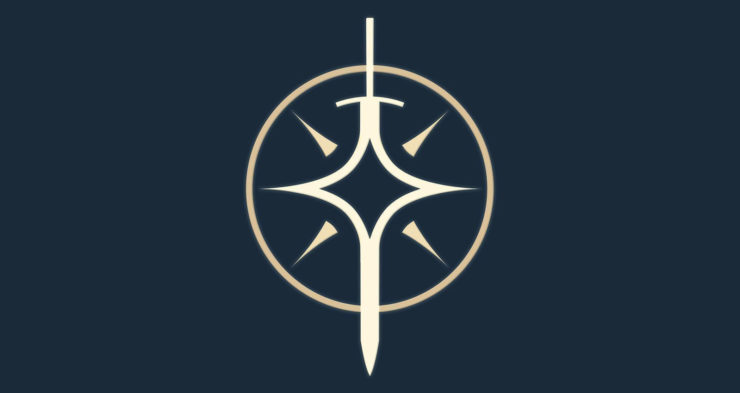Hello Stormlight fans! Welcome back to the world of Roshar. If you missed it, last week Kellyn and I took a look at Roshar’s ecology including its flora and fauna. Today I tour Roshar’s people and places. Ever wondered what the difference is between Iri and Rira? Or where Greater Hexi is? Join me and find out!
Warning: This series will contain spoilers for all of The Stormlight Archive published so far, and will occasionally draw on Words of Brandon for supporting information. I’ll do my best to avoid spoilers for other series, or to mark them if they really need to be included. I make no promises about the comment section; however, I’d request that if you want to include spoilers in a comment, please try to white-text them or at least tag them as spoilers so people can skip your comment.
Please note that, although the Rhythm of War early release of Part One has begun, we are NOT including anything from RoW in this series. If you’re following that and want to reference it in your comments, please tag it as a spoiler and, if possible, white-text it.
Modern day Roshar is a large and diverse continent with a variety of ethnicities, nations, and ways of living that are only hinted at in the books. Before we dive into what we know about each region and its people, we must discuss how Roshar is shaped by its history. If you need a refresher on the basics of Rosharan history, check out Alice’s post on the topic. There is one era that seems to have most influenced modern Roshar: the Heraldic Epoch and its ten Silver Kingdoms.
The Ten Silver Kingdoms

During the time of the Desolations, Roshar was divided into the so called Silver Kingdoms: Iri, Shin Kak Nish, Sela Tales, Aimia, Makabakam, Valhav, Rishir, Alethela, Natanatan, and Thalath. Though they no longer exist, they greatly influenced the cultures and nations that grew from their bones. For example, Makabakam split into more than ten nations but the people of these nations consider themselves ethnically Makabaki. To the west, Alethkar and Jah Keved maintain much of the land once a part of their predecessor Silver Kingdoms, Alethela and Valhav respectively. Shinovar may be the only nation to maintain much the same borders and people as it had during the Heraldic Epoch.
The Modern Era
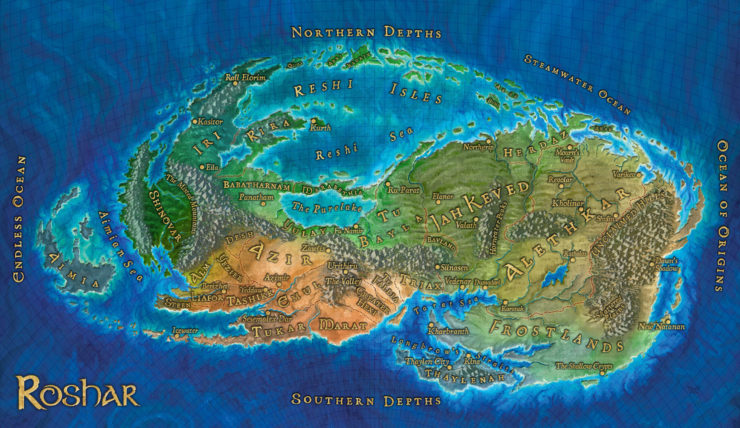
In the current era, also called the Era of Solitude, the ten Silver Kingdoms have broken up into more than 26 nations or regions. We’ll take a look at each of them, though some we know almost nothing about!
To give our discussion some structure, let’s start with one of the most relevant political divides on Roshar: the mutual distrust of the Makabaki nations of the west and many of the Vorin nations of the east. This enmity begins to ease in Oathbringer due to Dalinar’s attempts at diplomacy and his desire to unify the remaining human nations against Odium’s forces. But it still forms a cultural and political touchstone. Traditionally, the Vorin kingdoms saw the Makabaki as pagans and barbarians while the Makabaki in turn resented the aggression of the Vorin cultures epitomized by the genocide perpetrated by the conqueror Sadees the Sunmaker.
Of course, there is one other group we haven’t yet discussed: the singers. History is written by the winners, so we have little information about the history of the singers. Millions of them live on Roshar and so must have been residents of some of the Silver Kingdoms. Were some of the ten kingdoms wholly governed by the singers? We don’t know, though I’d love to hear your theories.
In Oathbringer, the newly awakened singers consider themselves culturally from the nation that oppressed them. Venli ridicules them for this belief:
The singer woman lingered. She wore an Alethi dress, with the left hand covered up… That lopsided dress looked ridiculous. There was no reason to distinguish between the genders except in mateform.
As the singers explore their freedom and grow into their new lives, the nations and cultures of Roshar are sure to be forever changed. Since these changes are so recent and none of the characters has firsthand knowledge of them besides Venli, I’ll mostly describe the borders, nations, and cultures that existed before the Everstorm.
Vorin Nations
The Vorin nations consist of Alethkar, Thaylenah, Jah Keved, and the city-states Kharbranth and New Natanan. Vorinism is a major Rosharan religion that worships the Almighty as the creator of the world and mankind. His ten Heralds are also exalted, especially Jezrien. The cultural aspects of Vorinism are shared by the Vorin kingdoms and so the word Vorin has come to describe both the religion and the culture.
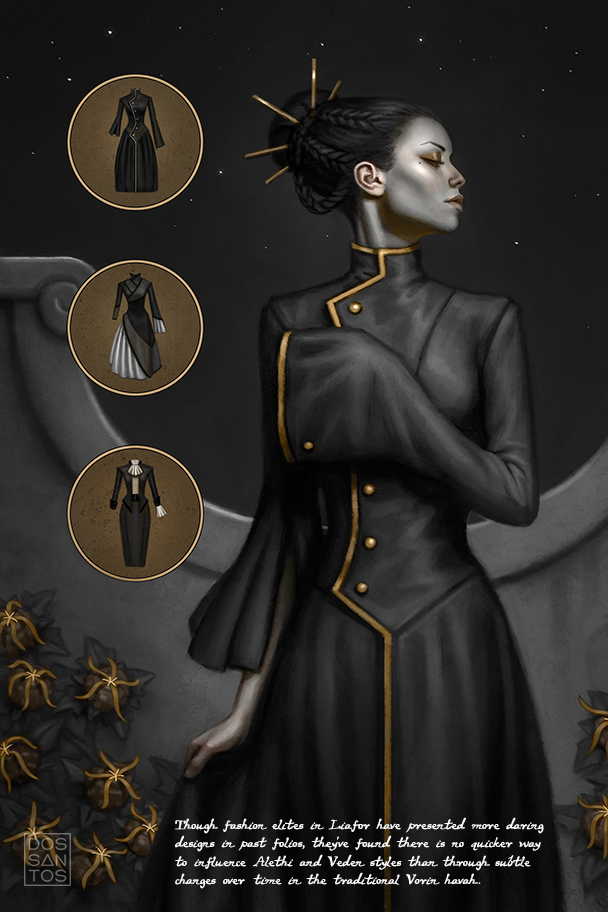
Vorin culture distinguishes a person’s position and role in society on three main axes: gender, eye color, and caste (nahn and dahn). The roles, allowed activities, and clothing of the genders are segregated in Vorin society. Women usually wear dresses and always cover their left hand, or safehand, as it is considered immodest not to do so. The dresses of higher caste women often have long left sleeves that completely cover their left hand while most working women simply wear a glove. Sanderson has hinted at where this tradition began:
It’s part of what has grown out of the Vorin culture, and there are reasons for it. One of them has to do with a famous book written by an artist who claimed that true feminine pursuits and arts were those that could be performed with one hand, while masculine arts were those performed with two hands, in a way associating delicacy with women and brute force with men. Some people in Roshar disagree with this idea, but the custom has grown out of that foundational work on masculine and feminine arts.
Presumably, this famous book is Arts and Majesty which was mentioned in Words of Radiance. Feminine arts include reading, writing, music, and the visual arts. Masculine arts include fighting, politics, and military strategy. As a result, many Vorin men cannot read. They rely on their female family members to read and write for them. Vorin men often wear pants and shirts though there are some traditional outfits that include a mens skirt like the takama.
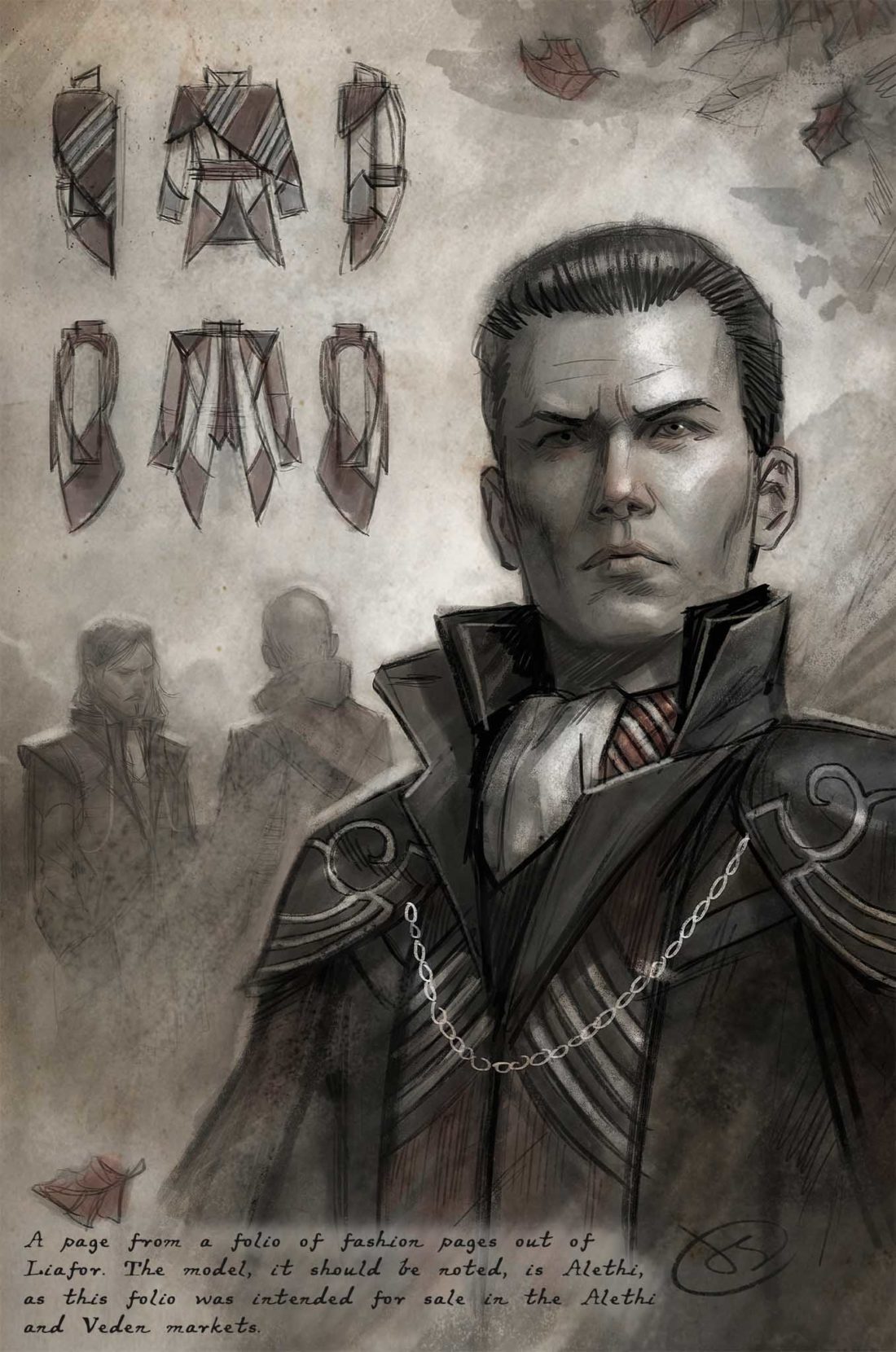
Eye color may be the feature that most determines a person’s position in Vorin society. Those with light colored eyes are considered chosen by the Almighty to rule. This difference has been codified into a 10-level caste system for the lighteyes (dahns) and one for the darkeyes (nahns). Criminal actions, mistakes, and financial losses can cause one to go down in caste while wealth and being appointed to a ruling position can raise one’s caste. The difference between lighteyed castes and darkeyed castes is pretty strictly maintained. Dalinar describes the issues when trying to promote Kaladin to head of his household guard:
Dalinar thought for a moment. “Very well. Consider yourself appointed to the rank of captain—that’s as high as I dare appoint a darkeyes. If I named you battalionlord, it would cause a whole mess of problems.”
I’ve sketched the general outline of Vorin culture here, but it varies by region and kingdom. For example, Thaylenah is nominally Vorin but also follows the Passions. The use of full-sleeve safehands seems to be a mostly Alethi fashion choice. Speaking of these differences, let’s take a look at each of the individual Vorin kingdoms.
Alethkar
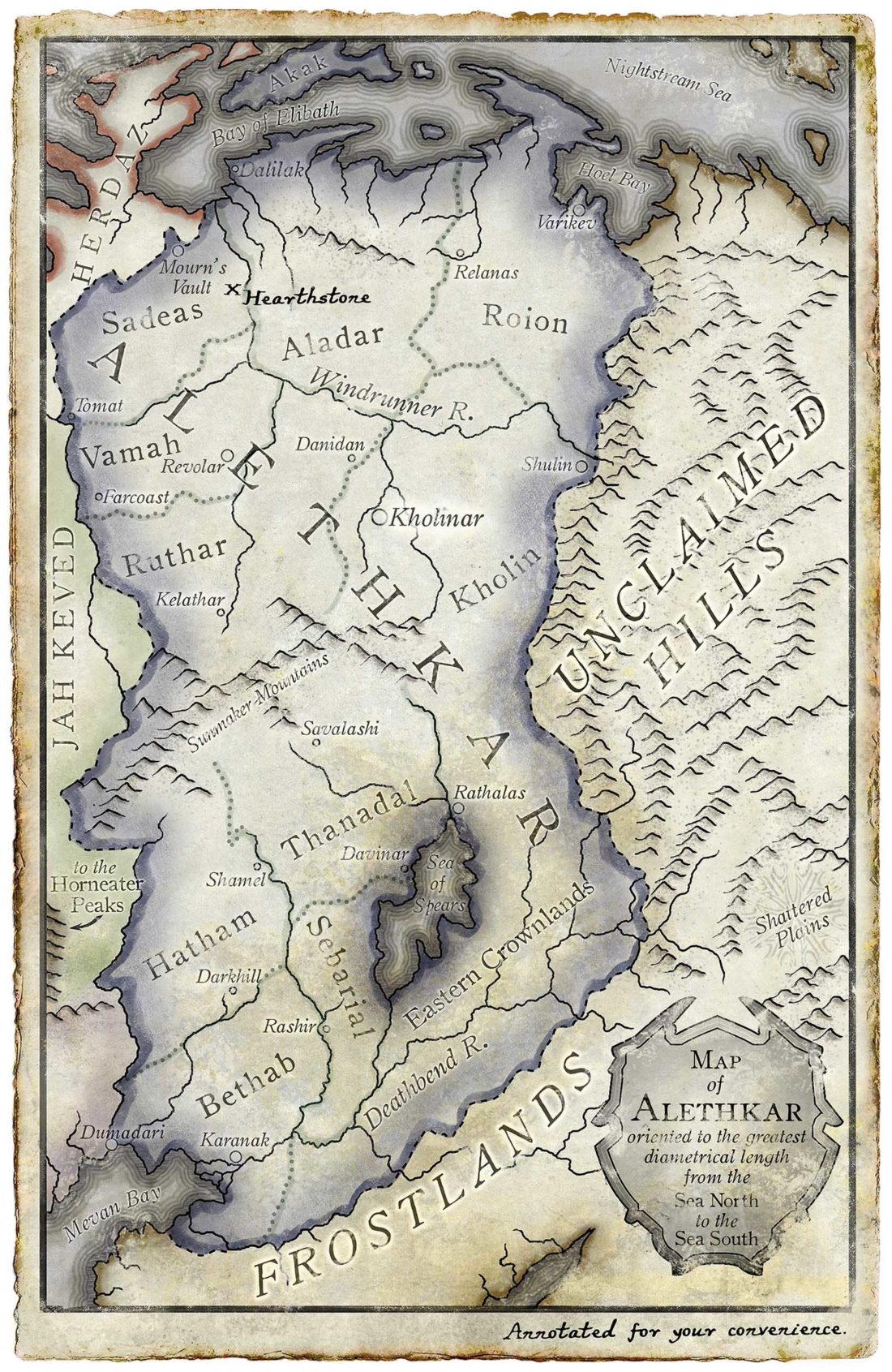
Alethkar is the home of the Alethi people and is considered militaristic and aggressive by many other nations. Its people speak Alethi and are usually taller than other ethnicities. They have tan skin and black hair. Other hair colors are seen as a mark of foreign blood and impurity as Adolin remarks in Words of Radiance:
“My hair?” Adolin said, touching it.
“Yes,” Shallan said, trying to get her sluggish brain working again. “Blond hair isn’t often seen in Jah Keved.”
“Some people see it as a mark of my bloodline being impure.”
“Funny. They say the same about me because of my hair.” She smiled at him.
Alethkar rose from the Silver Kingdom Alethela and was ruled by the Vorin Church for many years. This period was known as the Hierocracy and lasted until the Sunmaker revolted and attempted to conquer the world. When the Sunmaker died, his ten sons broke the kingdom up into princedoms ruled by highprinces. This lasted until Gavilar and Dalinar waged their war of unification and Gavilar was crowned king. Alethkar’s capital is Kholinar which has an Oathgate.
Modern Alethkar has ten princedoms which bow to the crown but squabble amongst themselves. Those allied with the Kholins by the end of Oathbringer are Aladar, Hatham, Sebarial, Roion, Bethab, and the Crownlands. Sadeas is their adversary and is joined by Thanadal, Vamah, and Ruthar.
Thaylenah
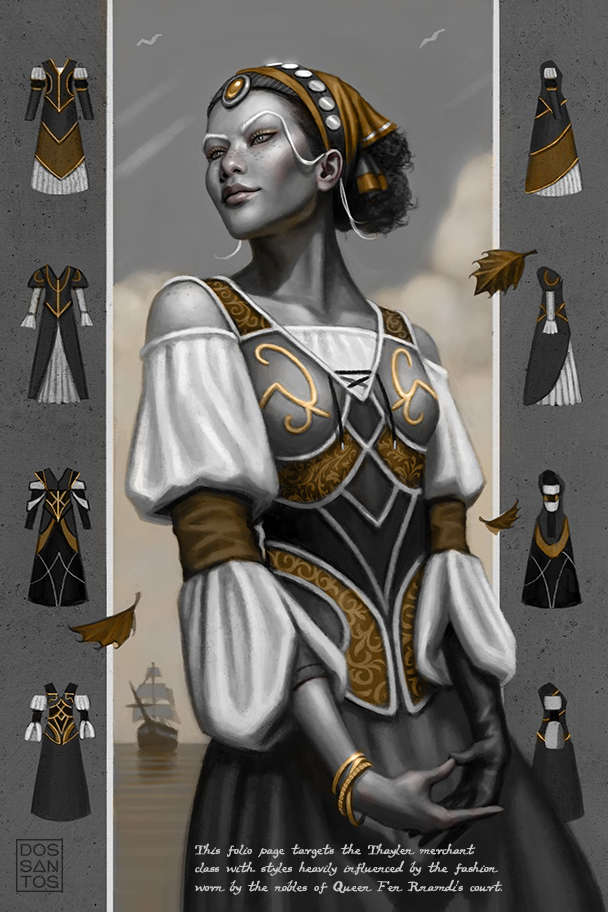
Thaylenah is a nominally Vorin constitutional monarchy. Shallan thinks they don’t use the same caste system as the Alethi and Vedens, though they do maintain eye color as a differentiator. The Thaylen people speak Thaylen and their island nation has become a commercial powerhouse on Roshar. Their fleets and caravans trade throughout the world. For example, the Thaylen merchant Rysn and her babsk, or teacher, Vstim trade as far away as Shinovar and the Reshi Isles. The capital, Thaylen City, has an Oathgate.
Thaylen people have darker skin than the Alethi though not as dark as the Makabaki. Their eyebrows grow white and extremely long. They often hook their eyebrows behind their ears and style them into things like curls or spikes. As mentioned, the Thaylen are Vorin but also follow the Passions which is a religion promoting the belief that if you want something badly enough you will draw it to you.
Kharbranth
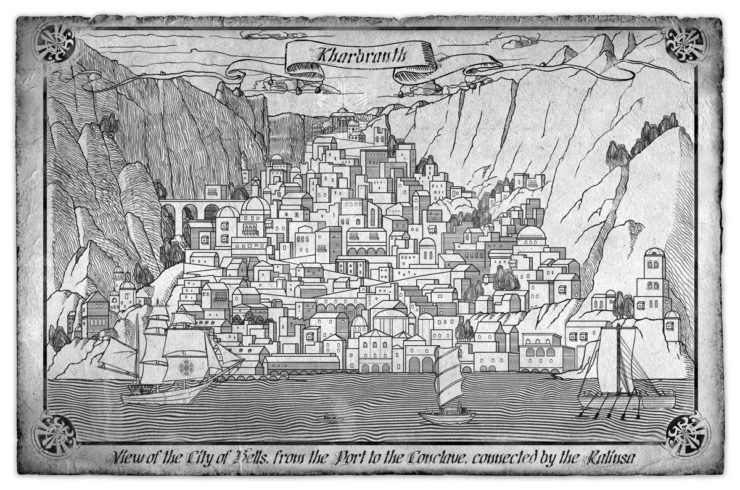
Kharbranth is a city-state ruled by King Taravangian. It is known for its scholarship and especially for medicine. Kaladin wished to study as a surgeon at the Great Concourse of Kharbranth. Their hospitals are world renowned. Kharbranth is also known for its library, the largest in the world. Known as the Palanaeum, entrance to the library is expensive and the funds go to the city’s hospitals.
Kharbranth is known as the City of Bells because of the many bells found throughout the city. It is protected from highstorms and the Everstorm by its location in a south-west facing lait at the edge of the Frostlands. Because of this protection, the bells are said to be the only way to know that a storm is passing. People from many nations and walks of life can be found in Kharbranth. It is a multicultural city that welcomes visitors. Unlike other Vorin nations, Kharbranth does not allow human slavery.
Jah Keved
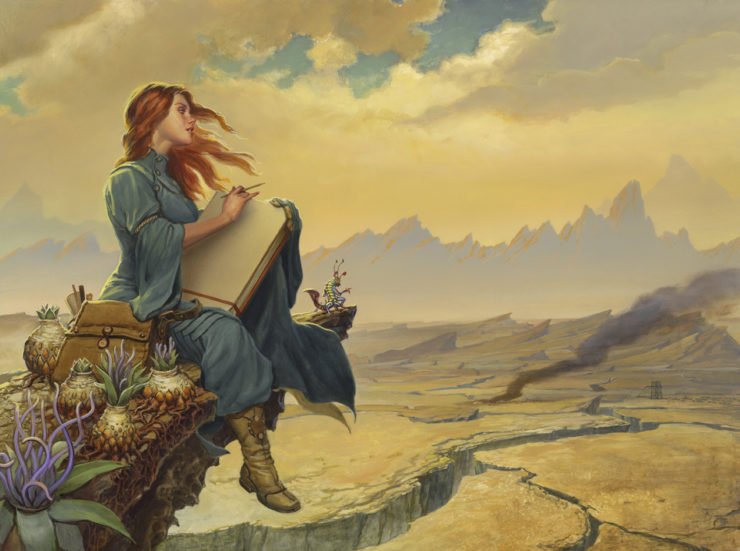
Jah Keved is a Vorin nation west of Alethkar. People from a number of different ethnicities live in Jah Keved: Veden, Siln, Bav and Unkalaki (Horneater). The Vedens rule the nation from Vedenar, the capital of the Silver Kingdom Valhav which has an Oathgate. They appear to have had a king and highprinces similar to the Alethi, at least until Szeth kills many of them which sets off a succession war. Eventually, Taravangian becomes king of Jah Keved.
The Veden people have pale skin and some have violet eyes, which are not common in Alethkar. They speak Veden, which is similar to Alethi. Like the Alethi, eye color determines social caste. Veden families name their sons with a two-part name where the first part is determined by their birth order and the second part is their given name. The first four sons use Nan, Tet, Asha, and Van, respectively. When an older son dies or is disinherited, the younger sons all move up one name. This happened to Shallan’s brothers when Heleran was disowned.
We don’t know much about the Siln or Bav. The Siln are distinct from the Veden and their city Silnasen used to be a sovereign city-state perhaps ruled by the Siln dynasty. Shallan believes the Siln to not be a very advanced society:
The Silnasen natives, the Reshi peoples, the runners of the Iri plains—have no real concept of assassination. From what I know, they don’t seem to have much use for battle at all. Hunters are too valuable, and so a ‘war’ in these cultures will involve a lot of shouting and posturing, but few deaths.
We know similarly little about the Bav, sometimes called Bavlanders. They have their own language and multiple dialects. They also seem to be primarily a mining society due to the rich ore and mineral deposits in their lands.
I’m not sure the Horneaters can be considered Vorin, so we’ll discuss them a bit later on.
New Natanan
New Natanan is a city-state in the Frostlands at the eastern-most edge of Roshar. Its people are called Natan and have pale blue skin and wooly white hair. Sanderson has said that they might be part Siah Aimian! Some of them have high and low forms of their names. For example, the ambassador to the Alethi, Au-nak, has the high name Nak-ali. While the Natans are Vorin, they also worship the moons, especially Nomon, due to the myth that their skin color comes from a queen who had children with the moon.
They claim that they are the descendants of the Silver Kingdom Natanatan and, as such, that the Oathgate in the former capital of Stormseat should be theirs. However, Stormseat appears to have been destroyed when the Shattered Plains were created, so the Oathgate at Narak is now held by the Alethi.
That’s all the Vorin nations. Let’s head over westward to the Makabaki countries. Onward!
Makabaki Nations
Many of the nations in the area that once made up Makabakam share similar cultural and political traditions. The Makabaki have darker skin than many other Rosharans but have epicanthic folds like all Rosharan humans except the Shin. They usually have dark hair and dark eyes, so eye color is not a social differentiator. The Makabak region sports rich cultures which are known for their trade and commerce. Many of the ethnically Makabaki nations are a part of the Azish Empire which is where we’ll start our tour.
Azish Empire
The Azish Empire is an alliance of Makabaki nations which claim fealty to the Azish Prime Aqasix while, in reality, being mostly sovereign. However, Azir is the largest of the empire’s nations and holds a lot of political influence over the others.
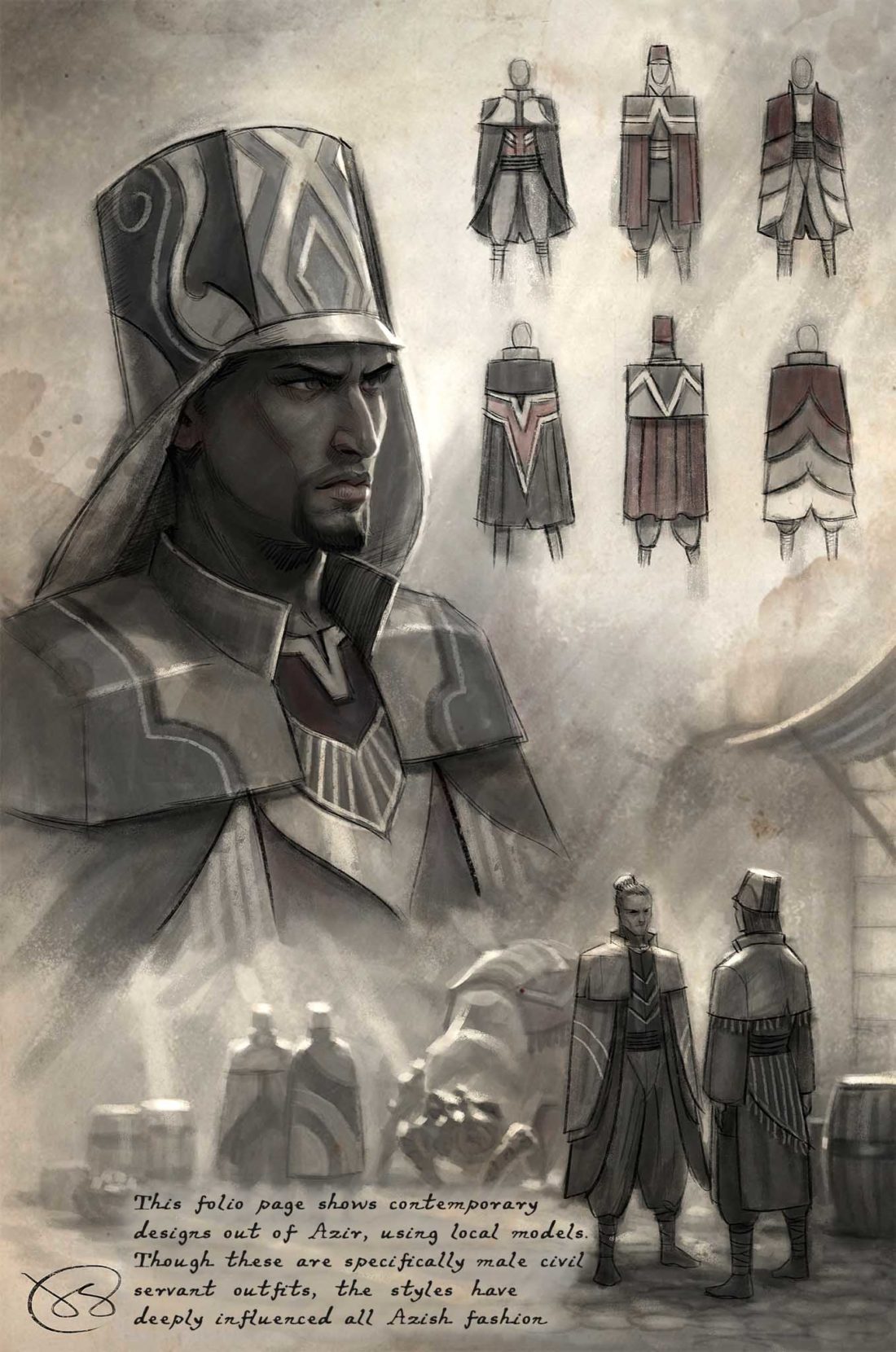
Azir
Azir is a scholarly republic ruled by the Prime who is chosen by the viziers (advisors) and scions (priests) based on essays written by the applicant viziers. The Azish people speak Azish and have their own writing system separate from the women’s script of the eastern nations. They worship the Heralds who they call the Kadasixes, especially Jezrien who is known as Yaezir the Kadasix of Kings. Their priests are not slaves like the Vorin ardents.
They don’t determine social status by eye color, but instead by education and position in the bureaucracy. A person’s position can be discerned by the clothes and patterns they wear. Azish clothes are often brightly colored with bold patterns. The nation’s large bureaucracy is open to any who can pass a written test, though those with privilege are more likely to do so. Sigzil once wanted to take the test but never got the chance:
Everyone in Azir talked about how even the humblest man could become Prime, but the son of a laborer had so little time to study.
Unlike in Vorin nations, the Azish don’t seem to separate roles by gender to the same degree. Both men and women can become viziers or scions. Women don’t have safehands. However, the Azish appear to have stricter morality around relationships. Sigzil implies that homosexual relationships are treated specially in Azir, while the Alethi don’t seem to have the same concern:
“Sir, Drehy hasn’t filled out the proper forms,” Sigzil said. “If he wants to court another man, he needs to apply for social reassignment, right?”
Kaladin rolled his eyes. So, there were no forms for that in Alethkar.
Sigzil couldn’t say he was surprised, as the Alethi didn’t have proper procedures for anything. “Then how do you apply for social reassignment?”
“We don’t.” Kaladin frowned.
Compared to the eastern nations, Azir is considered very organized and bureaucratic. Dalinar doesn’t think much of their military. However, the Azish take pride in their system of bloodless transitions of power and often act respectful, seeking not to offend. The Azish capital Azimir has an Oathgate.
Tashikk
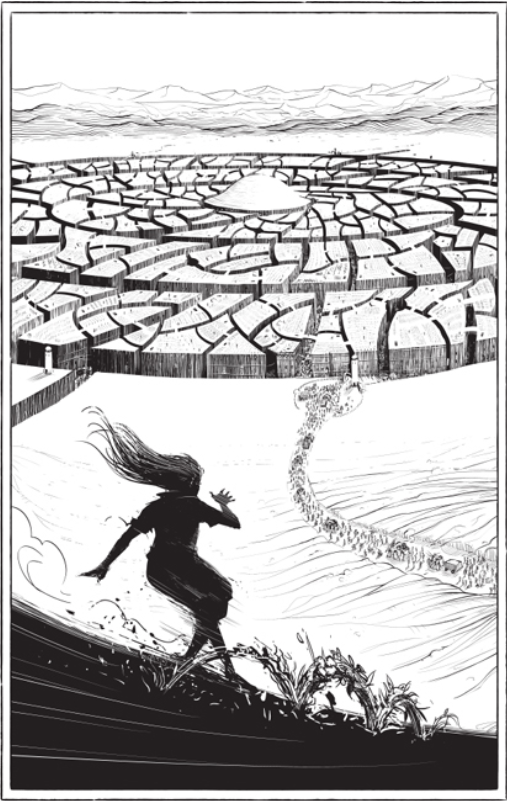
The Tashikki people of Tashikk are ethnically Makabaki. Lift thinks they’re too polite and reserved when she visits Yeddaw, a major city. Tashikk is ruled by a prince, though it has very close ties to Azir, from which it both lends and borrows military resources. Tashikki men and women often wear a single piece of cloth called a shiqua that wraps their entire body including the face. This is to shield their face from the evil god Nun Raylisi who probably represents Odium. Opposing him are Tashi and the Nine who represent the Heralds.
Tashikk is known abroad for its spanreed hubs and information trading which enable the flow of information across Roshar.
Yezier
Yezier is another nation that is politically close to Azir. It is ruled by a princess who, vizier Noura notes, lives in Azimir half the year. Yezier is known for its fashion as well as its timekeepers and stormwardens.
Liafor
Liafor is known across Roshar for its fashion. Adolin is often seen browsing Liaforan fashion folios which are tailored to their local audience. The nation is ruled by a prince and had a soulcaster that could transform things into smoke. The soulcaster was lost when Kaza, its bearer, failed to reach Aimia and transformed it and herself to smoke.
Emul
The nation of Emul is more independent of Azir than many others. The Emuli worship Jezrien who named their capital city of Sesemalex Dar and call him Prime Kadasix. Sigzil tells Bridge Four of the city:
“Sesemalex Dar. It is, indeed, built in giant troughs. The pattern is quite amazing. It protects against highstorms, as each trough has a lip at the side, keeping water from streaming in off the stone plain around it. That, mixed with a drainage system of cracks, protects the city from flooding.
“The people there are known for their expert crem pottery; the city is a major waypoint in the southwest. The Emuli are a certain tribe of the Askarki people, and they’re ethnically Makabaki—dark-skinned, like myself…A foreigner can take dinner at any residence he calls upon, assuming he is respectful and offers a gift of fruit. The people are most interested in exotic fruits.”
Sigzil continued in more and more detail, talking of the flowing gowns and head-wraps of the Emuli women, the robes favored by the men.
The capital city is the subject of a feud with Tukar over its religious significance and importance as a port. The Emuli have been devastated by the war with Tukar and now the singer invasion from Marat. Urithiru might be considered to be in Emuli territory.
Steen, Alm, and Desh
Little is known about the smaller nations of Steen, Alm, and Desh. Steen has merchant lords and Kaza meets mercenaries from the nation. Lift notes that people from Alm and Desh often wear clothing in lighter colors.
Broken from the Empire: Marat and Tukar
The nations of Marat and Tukar have both broken from the Azish Empire. Szeth thinks of Marat as a waystop between the eastern Vorin nations and the Makabaki nations. West of Marat, women don’t cover their safehands. Marat is a tribal nation ruled by a highprince called “elder brother,” according to Szeth. Many characters mention fine Marati rugs or weaving. Marat has been overrun by Odium’s forces.
Tukar is a theocracy under the rule of their god-priest Tezim who is actually the Herald Ishar. Ishar is probably not of sound mind and this has led other nations to think of the Tukari as volatile. As mentioned, Tukar has been at war with Emul for generations.
That’s all the ethnically Makabaki nations. But Roshar is huge and there are quite a few regions and groups we haven’t yet discussed. Let’s tour them now!
Neither Vorin nor Makabaki
There are a number of nations and peoples who are neither Vorin nor Makabaki. We’ll discuss the ones on the eastern side of Roshar first.
The Shattered Plains
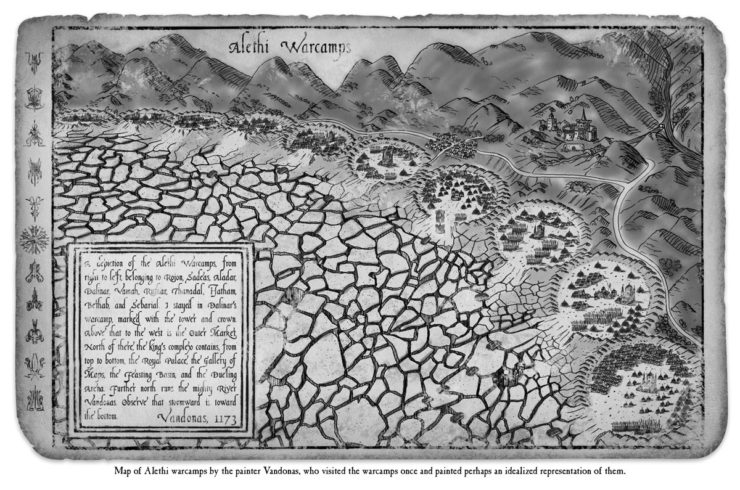
The Shattered Plains and surrounding Frostlands are cold, exposed to highstorms, and sparsely populated. Despite this, they are the home of the listeners. The listeners are a group of singers who broke away from Odium’s forces at some point before the end of the False Desolation. As a result, they are the only known singers who kept their Identity and their minds when Ba-Ado-Mishram was imprisoned. They used to be a bunch of different tribes, though they appear unified by the time we see them on screen in Eshonai’s chapters. They are ruled by the Council of Five and their culture is based on an oral tradition of memorized songs passed down through the generations.
During the Alethi War of Reckoning and advent of the Everstorm, the Shattered Plains came to be ruled by the Alethi.
Herdaz
At the northern end of Alethkar and Jah Keved is Herdaz. Herdazians have brown skin darker than the Alethi but lighter than the Makabaki and are often confused with the Reshi. They have some singer blood which is visible in their crystalline, slate-colored fingernails. They are nominally Vorin, though they aren’t considered a Vorin nation. Men write in Herdazian culture.
Many Herdazians live outside of Herdaz in the surrounding nations. They have large families; Lopen claims many cousins. We get a taste of the Herdazian language from Lopen including such wonderful sobriquets as naco, hooch, and gancho. Their cuisine includes many shelled animals and their most famous dish is called chouta. For a chouta recipe you can make at home, check out Deana’s post!
Horneater Peaks
The Unkalaki, or Horneaters, live in the Horneater Peaks in Jah Keved. The peaks of the mountains are heated by geothermal vents and have craters at the tops which are filled with water. Rock describes the Peaks:
His homeland was a place of extremes: bitter ice, powdery snow, boiling heat, and blessed humidity.
Buy the Book
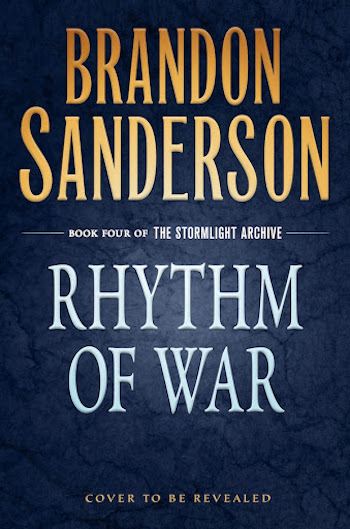

Rhythm of War
Beneath the water of the Peak’s “Oceans” is Cultivation’s essence which creates her Perpendicularity, the only stable one on Roshar. Hoid, Zahel, and Azure use this path to access Roshar. For more on these worldhoppers check out Drew’s post on the topic (warning: non-Stormlight spoilers).
The Unkalaki people have pale skin and are known for their red hair and height. They have some singer blood and can digest shells and carapace, hence their colloquial name Horneaters. Some Unkalaki can see spren, though it’s unclear if this is a gift of their singer blood or some effect of living near the Perpendicularity.
The occupation of an Unkalaki family’s sons is determined by their birth order with first and second sons finding food, third sons becoming craftsmen, and fourth sons becoming warriors. Similar to the Vedens, sons will shift roles if an older brother dies or is disowned. The Unkalaki belong to clans led by a Nuatoma whose family act as servants for him. Unkalaki names are often long poems which makes them hard for outsiders to pronounce. This might be because their language is what Sanderson has called a Dawnate language, descended from the Dawnchat like Shin or the listener language.
* * *
That’s it for the eastern side of Roshar. Onto the western side of the continent!
Reshi Isles
The Reshi Isles are a series of islands near the Rosharan equator. As a result, they are quite humid and warm. The Reshi Isles were once part of the Silver Kingdom of Rishir. Some of the smaller Reshi Isles are actually giant greatshells called Tai-na. Reshi people reside in towns on the backs of these Tai-na and worship them as gods. They feed them offerings of fruit. The islands are ruled by kings who may be men or women. The Reshi are secretive about the greatshells and their spren; Axies the Collector is hung upside down by his feet for asking about them. When the greatshells come into contact with one another, there can be war or something “good.” War often involves a lot of shouting and posturing.
The Reshi people have tan skin, black hair, and their features are more rounded than most. They wear mostly wraps with women sometimes going bare chested, and often swim unclothed. The carefree lifestyle of some Reshi attracts immigrants who join their cities from across Roshar. The Reshi believe boldness is rewarded by their gods. When Rysn takes this to heart and boldly petitions the greatshell for aid, she falls from the Tai-na’s head. The greatshell gifts her a living larkin which Vstim had thought were extinct.
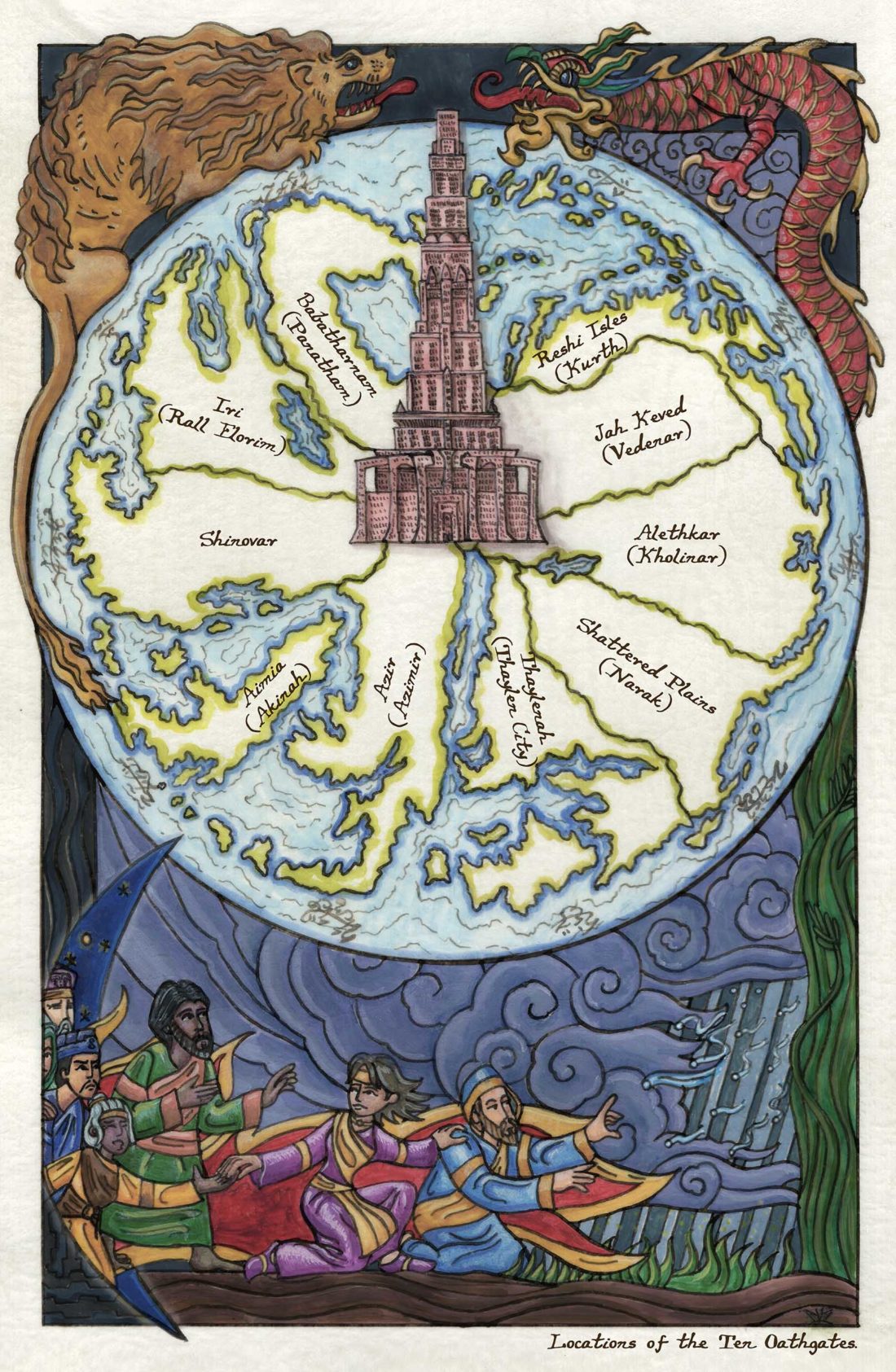
Iri
Iri in northwestern Roshar was one of the Silver Kingdoms, though it is smaller in territory than it was then. There is an Oathgate in its capital Rall Elorim, City of Shadows. The Irali city of Kasitor contains a large spren called Cusicesh the Protector that some locals worship:
At precisely seven forty-six in the morning—the locals could use it to set their timepieces—an enormous, sea-blue spren surged from the waters of the bay. It was translucent, and though it appeared to throw out waves as it rose, that was illusory. The actual surface of the bay wasn’t disturbed.
It takes the shape of a large jet of water, Axies thought, creating a tattoo along an open portion of his leg, scribing the words. The center is of the deepest blue, like the ocean depths, though the outer edges are a lighter shade. Judging by the masts of the nearby ships, I’d say that the spren has grown to a height of at least a hundred feet. One of the largest I’ve ever seen… It has formed a face, looking eastward. Directly toward the Origin. That face is shifting, bewilderingly quick. Different human faces appear on the end of its stumplike neck, one after another in blurred succession.
Iri is ruled by a triumvirate of monarchs, currently two kings and a queen. The queen has responsibility for foreign affairs. They claim their sister nation of Rira, but this is disputed by the Rirans. The Iriali are particularly interesting because they did not come to Roshar from Ashyn at the same time as the rest of the humans. They have some inhuman ancestry as is apparent in their hair which is metallic golden in color, not just blond. Most Irali have yellow eyes. Though they live near the equator where it is hot, the Irali dislike public nudity.
The Irali do not worship the Almighty or the Heralds. Instead they believe in “the One” as Ym explains:
Long ago, there was only One. One knew everything, but had experienced nothing. And so, One became many—us, people. The One, who is both male and female, did so to experience all things… I accept no god. You should accept no god. We are Iriali, and part of the Long Trail, of which this is the Fourth Land… Iriali need no preaching, only experience. As each experience is different, it brings completeness. Eventually, all will be gathered back in—when the Seventh Land is attained—and we will once again become One.
The Irali sided with Odium when the Everstorm came.
Rira
Iri’s sister nation of Rira broke off from it sometime after the Heraldic Epoch. Rirans are similar to, but genetically distinct from, the Irali. They have light blond hair and light golden skin. Evi, Dalinar’s first wife, is from Rira and believes in the One, so perhaps Riran’s share a religion with their sister nation. Rira has an Oathgate in Kurth, City of Lightning, but it was lost to the Radiants when Rira joined its sister nation and sided with Odium.
The Purelake
The Purelake is a shallow inland lake that is somehow influenced by Cultivation. The water is warm, crystal clear, and usually about a foot or two deep. It is hot and humid in the Purelake other than when a highstorm blows past and the lake drains into holes in the ground. The storms are weaker this far west and don’t blow down exposed buildings. Some of the fish that live in the Purelake have magical properties and bond spren.
There are humans who are native to the Purelake and have long limbs, leathery skin, and dark hair. Purelakers, like Ishikk from The Way of Kings, have a distinct religion:
Of course Nu Ralik was their god, but you always pretended that he wasn’t. Vun Makak—his younger, spiteful brother—had to be tricked into thinking you worshipped him, otherwise he’d get jealous.
They are mostly fishermen, live in small villages, and speak Selay. They have a carefree attitude and don’t like to rush life. Most Purelakers enjoy exposure to the lake and have learned to navigate its rocky terrain. They build houses where the floor is flooded by the lake, though they prefer to sleep on rafts.
Nations Near the Purelake
The nations that surround the Purelake used to be part of the Silver Kingdom of Sela Tales. These include Babatharnam, Tu Bayla, Yulay, and Marabethia. Sigzil seems to have visited many of these nations with his master.
Babatharnam’s capital of Panatham has an Oathgate and is ruled by the oldest living person in the nation, called the Most Ancient. For many generations the Monavakah Dynasty has ruled Babatharnam by killing anyone who might become old enough to challenge them. Sigzil shares some details of the place:
They have very peculiar trees. The entire plant—trunk and all—lies down when a highstorm approaches, as if built on hinges. I was thrown in prison three times during our visit there. The Babath are quite particular about how you speak…The women there, you see, have these patterns of veins that sit shallowly beneath their skin. Some visitors find it unnerving, but I found the patterns beautiful. Almost irresistible…
Most of what we know about Marabethia also comes from Sigzil:
The people are known for their great fondness for debate. At each intersection in the city they have small pedestals on which a man can stand and proclaim his arguments. It is said that everyone in Marabethia carries a pouch with an overripe fruit just in case they pass a proclaimer with whom they disagree… They have a curious way of treating condemned criminals. They dangle them over the seaside cliff near the city, down near the water at high tide, with a cut sliced in each cheek. There is a particular species of greatshell in the depths there… So the criminals, they become bait. A criminal may demand execution instead, but they say if you hang there for a week and are not eaten, then you can go free.
We know next to nothing about Yulay, though Tyn grew up in Tu Bayla and Dalinar calls the people there nomadic. It is believed by the coalition of monarchs that the Purelake and its surrounding nations have fallen to Odium’s forces.
East of Marat
Between Marat and Jah Keved are the three nations Greater Hexi, Tu Fallia, and Triax. They are believed to be sparsely populated nomadic societies that quickly fell to Odiums forces. The Valley of the Nightwatcher is in Greater Hexi.
The Far West
Last but not least are the nations of the far west, Shinovar and Aimia. Both were once Silver Kingdoms and have their own Oathgates.
Shinovar
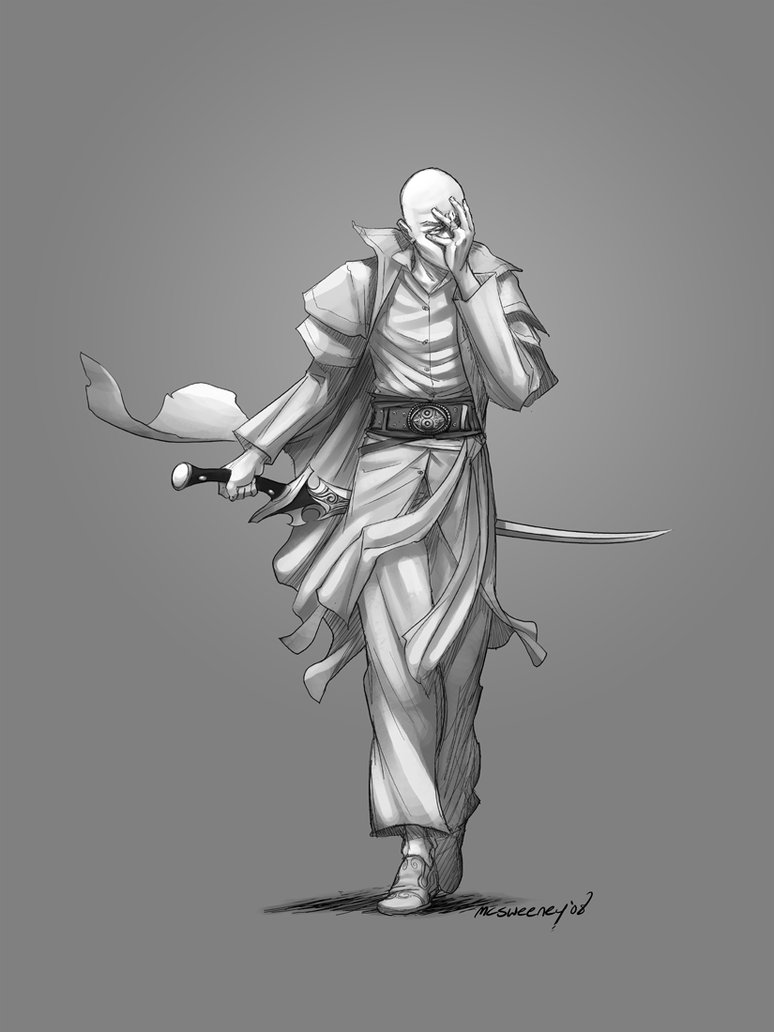
Shinovar is protected by the Misted Mountains from highstorms and, as a result, its ecology is similar to Earth. It was given to the humans fleeing the destruction of Ashyn who brought with them plants and animals from the doomed planet. Eventually, humans left Shinovar and conquered the rest of Roshar.
The Shin people have round faces and no epicanthic folds. People in other nations think this makes them look like children. They have pale skin and use patronymic (and maybe matronymic) names. For example, Ali-daughter-Hasweth means Ali, the daughter of Hasweth. The Shin language is descended from the Dawnchant. The Shin have strict social structures based on occupation with farmers at the top, merchants and craftsmen in the middle, and warriors at the bottom. They believe that those who create should be exalted over those who destroy. Farmers are given the title “he who adds.” Warriors have stones that represent their voluntary subjugation into a state akin to slavery. Usually they are owned and traded by farmers and must obey the command of whoever holds their stone. A Truthless is below a warrior and must live like a warrior, but exiled from Shinovar.
The Shin religion is called Stone Shamanism. Stone is sacred to them and not to be walked on. Szeth believes that when he dies his soul will be given to the stones. Somehow the Stone Shamans became the keepers of many of the Honorblades after Aharietiam.
The Shin are humble people and like to undersell their goods when trading. Due to their reverence for stone, they often trade for soulcast metal so that they don’t need to break stone to quarry for it. Animals like horses and birds (all birds are called chickens by non-Shin Rosharans) are only native to Shinovar along with many fruits like grapes and strawberries.
Aimia
Finally, there is Aimia. The islands of Aimia are land furthest west from the Origin of Storms. They were home to the Dysian Aimians (or Sleepless) and Siah Aimians before the place was destroyed by the Scouring of Aimia. The two races of Aimians are not related and are not human. We aren’t sure if they are native to Roshar. Dysian Aimians are a hive mind of smaller beings, usually cremlings which they call their horde. Siah Aimians can change their bodies and the only one we know of, Axies the Collector, has pale white-blue skin, deep blue nails, and blue eyes. Both species are functionally immortal and are cosmere aware.
The capital of Aimia was Akinah and it had an Oathgate, but Jasnah thinks the gate has been destroyed. The destruction may have been related to a Dawnshard being present on the island at one time. Alternatively, Hessi believes that an Unmade, Dai-Gonarthis, caused the destruction of the nation. Since then, it appears that the Sleepless protect Aimia from outsiders. While we don’t know what a Dawnshard is, it is theorized to be a magical device responsible for the destruction of Ashyn.
Wow, that was a lot of people and a ton of places. Thanks for sticking with me through them all! I hope you enjoyed the trip and know a bit more about the world of Roshar than when you started.
This is the last of the topics we had planned for this series. But perhaps you want more! Please share in the comments if there are other topics you’d like a refresher on in the lead up to Rhythm of War.










